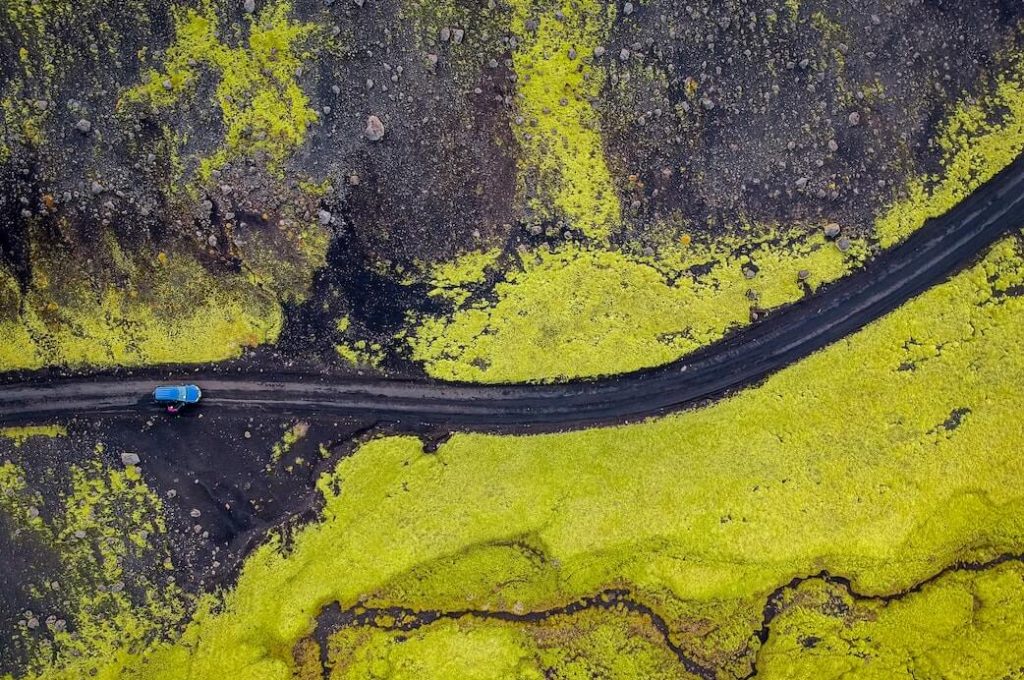Carbon offsetting: what is it good for?
April 19, 2018 | by alle contributor | Posted in Travel IQ

As a frequent flyer, I never truly understood the impact of my travels until I sat down and calculated them out. I found out that the impact of flying on the planet is astronomical: air travel emits as much carbon per year as 136 million cars, equaling more than 650 million tons per year. In other words, a round-trip flight, in economy, from San Francisco to New York, accounts for roughly 1 ton of carbon dioxide, per person. Compare that with your average American carbon footprint of 19 tons, per person, per year (the global average is 5 tons, per person, per year). Flying business or first class, leaves 9 times the carbon footprint, or 9 tons (almost half a years worth!) of carbon dioxide.
With the case of other non-environmentally friendly activities, like driving a Hummer, my answer is usually an unequivocal “stop doing it”, but I wouldn’t dare say that with travel and getting on a plane to travel far and wide. And as it turns out, I’m not the only one; there’s a whole slew of organizations who offer carbon offsetting programs, aimed at helping us frequent travelers deal with our guilt and continue doing what we love.
But there are so many different programs out there, each telling their own (quite confusing story), so I started digging. To be completely honest, I came away with more questions than answers. I found the bulk of this research quite frustrating, as I’m sure many before me have found too. I saw that there was a lack of communication and transparency when it comes to where the money goes, and who it goes to. There are a plethora of online carbon footprint calculators, the majority of which lack applicable information, or have massive donate buttons, nearly pulsating, beside them. My biggest takeaway: there’s a need for dialogue and for education. So let’s get talking, and let’s take a peek into the complex world of carbon offsetting. Here’s what I know to be true (at least for now):
How do we fit into this?
Here at allé, we strongly believe that travel has the capacity to do so much good for both us and the world. Instead of brushing important issues aside, like our carbon footprints, we want to face them head-on. Carbon emissions are surely the only negative environmental aspect of traveling far and wide, so we’re determined to find a way to offset the solutions emitted by our travels, as well as those of our clients.
What is carbon offsetting?
Carbon offsetting has traditionally come in the shape of planting a tree, or two, to “offset” your carbon emissions from that flight. But where does that money actually go? Are those trees really being planted? Or is it more of a feel-good gimmick, than a legitimate lasting impact?
Who are the main players?
The US has had a distraught history of trying to regulate airline carbon emissions, from multiple failed attempts to sign into law and place emission responsibility on the airlines, unlike their more successful European counterparts. Of the US airlines that are trying to contribute to carbon offsetting, there are few and far in-between. The two airlines who have the largest carbon offsetting programs are United and Delta. Both airlines support projects such as bringing wind-energy to Southern Texas or helping restore the deforestation in the jungles of Peru. However, many airlines, like Emirates, explicitly say that they don’t offer carbon offsetting initiatives because they believe that the responsibility for minimizing emissions shouldn’t be passed onto customers under a feel-good guise.
So what can I do?
Regardless of where you stand in the finger-pointing responsibility game, we encourage you to take initiative where airlines and corporations have not. We want to support organizations who are doing incredible work rebuilding biodiversity and the communities most affected by environmental changes due to carbon emissions. We’re not talking big money, just about $10, for a round-trip flight across the country, from LAX to JFK. Donate this money to a group like the Rainforest Trust Organization, the Environmental Defence Fund, The Nature Conservancy, or the Natural Resources Defence Council, all organizations committed to protecting the environment, and people and animals within it, from climate change. Airlines such as United and Delta also offer the option to reduce your carbon footprint with their own programs, but keep in mind that offset programs can and do make the airlines appear trendy and keep both environmental groups and regulators at bay.
What exactly is the impact of my flight?
If you’re curious about your flight carbon footprint and how much carbon emissions your seat on the flight is responsible for, head to the ICAO Carbon Offset Calculator. This is, sadly, one of the only carbon calculators out there (I looked for a long, long time) that doesn’t feel like a gimmick to get you to donate. Using the carbon calculator, know that the rule of thumb is to donate $2 per every 100 kg (220 lbs) of CO2 emitted to the initiative or organization of your choice.
Other than carbon offsetting, what else can I do?
There are, of course, other ways to lighten the carbon footprint load of your travels. Choose your airline carefully; fly with the three most efficient US carriers: Alaska, Delta, and United and if possible, in economy. Bring a fabric tote to the countries you visit instead of relying on plastic bags. Always bring and use a reusable water bottle if the local water is safe to drink. Be sure to turn off the lights when you leave your hotel or airbnb, don’t take long showers, don’t run the AC too long and take trains instead of cars whenever possible. Eating and drinking local products is also paramount, because shipping French wine to Costa Rica also comes with quite the carbon footprint.
If you’d like to chat more about climate change, your impact, or have tumbled down the rabbit hole and want to share your frustrations or (research!). I’d love to connect with you at [email protected]











